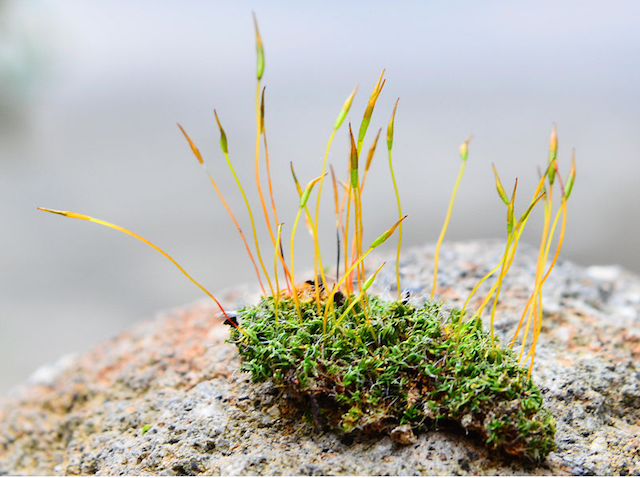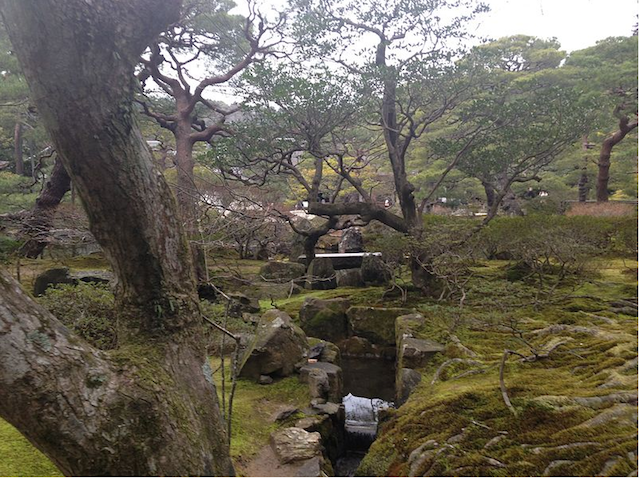Playing around with “depth of field” on my particular camera, I thought it would be fun to take a close up of the moss growing on my stone steps. Turns out, I need a different kind of camera to get the micro view I wanted. These steps face north and east and there always seems to be clumps of moss on some of them.
Moss is a Bryophyte. As “non vascular plants”, they don’t have that water sucking ‘xylem’ tissue that typical plants have. They have neither flowers nor seeds, instead reproducing by spores. It produces taller stalks called the sporophytes (containing the spores). The lower one cell thick leaves are the gametophytes, the mat or clump forms that we love to walk barefoot on. Mosses absorb water through these leaves, up to 20 times their weight. Instead of roots, they have hairlike protuberances called rhizoids.
By their nature, mosses collect water and nutrients and can be habitat indicators for the amount of available moisture. They thereby provide a buffering system for other plants that live alongside them and take advantage of moss capabilities.
Mosses grow well in shady areas with ample moisture. Think of the Pacific Northwest and places where fog rolls in daily. However, various varieties of moss are more sun tolerant and adapted to places of seasonal dryness. For example, the moss on my steps will become desiccated as the weather gets warmer–those steps can get hot enough to be uncomfortable in the summer. These particular clumps simply dry out and await more suitable growing conditions to rehydrate.
In Japan, moss gardens are frequently part of the temple gardens as seen in the picture below. The greens lend an air of age, stillness and calm as they carpet the ground below the trees. (Joshiji Temple)




